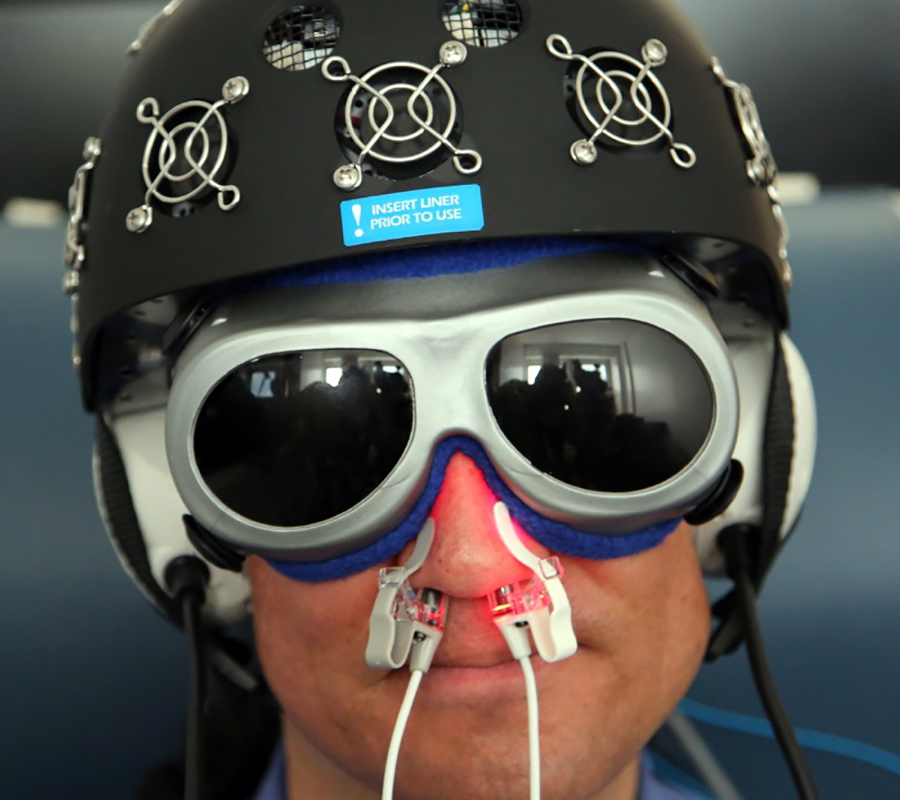MIT researchers in Boston have discovered that by exposing mice to LED light stimulation at a specific frequency, it is possible to reduce the beta-amyloid plaques, which are linked to Alzheimer’s disease.
The stimulative treatment appears to trigger the brain’s gamma waves, which suppress beta amyloid plaque production and help brain tissue get rid of these protein residues. Now researchers will continue investigating to see if this process could end up helping humans suffering from Alzheimer’s. There is no certainty as to whether the process will work in the same way, but because the process is noninvasive, researchers have labeled its potential as “enormous.”

A new possible cure for Alzheimer’s
The study was led by Li-Huei Tsai, a Picower Professor of Neuroscience and director of the MIT Picower Institute for Learning and Memory. One of the main focuses of Alzheimer research is to determine how beta-amyloid plaques are linked to the disease.
These protein-based plaques are suspected to be harmful to brain cells and to block normal brain function. Beta-amyloid levels are always high when the patient is diagnosed with Alzheimer’s disease, as it also contributes to cerebrovascular lesions in the condition of a neurotoxic substance. To this day, scientists are not sure how this compound accumulates in the central nervous system. The current hypothesis is that the plaques are responsible for causing Alzheimer’s disease, but this is by no means fully confirmed.
Researchers cite a previous study where mice were genetically engineered to develop amyloid oligomers instead of plaques, a molecular complex that is also mainly comprised of proteins. These mice developed Alzheimer’s but did not show plaque accumulation.
Studies suggest that Alzheimer’s patients also have lower rates of gamma waves, which range from 25 to 80 hertz. These waves sweep the brain from front to back at least 40 times per second, taking part in how one pays attentions to its surroundings and the overall sense of memory and recollection of information.
Whenever gamma wave cycles stop, the person becomes immersed in a coma. On the previous study carried out by Tsai, it was discovered that gamma oscillations were impaired in mice with Alzheimer’s as they were subjected to learning and memory-based activities.
Treating Alzheimer’s just by flashing lights
For the first experiment, Tsai and her team simulated gamma waves onto the brains of the subjects at 40 hertz, mainly in the hippocampus, which has a great involvement in how the brain administers and recalls information. This was achieved by shining LED lights on their neurons, which allowed researchers to alter the activity of the cells responsible for regulating gamma waves.
The subjects were stimulated for an hour, and it appears that the beta-amyloid levels in the brain of mice became reduced by at least 40 percent. The same experiment was carried out with different light frequencies but it did not yield any favorable results.

The research team hypothesized later that shining light from an external source might achieve the same effect. To achieve this, they built a device made out of LED light bulbs that were able to turn on and off at different frequencies. In a similar fashion, researchers exposed the mice to flickering lights at a frequency of 40 hertz and managed to reduce beta amyloid levels just like they did before. The only setback was that plaque levels returned to normal 24 hours after treatment.
Researchers wondered if frequent sessions could achieve a permanent effect in the beta-amyloid levels. The mice were exposed to 40-hertz flickering lights during one hour, for seven days straight. The reduction was notable, and now the team is trying to figure out how to make this a lasting effect.
“What this study does, in a very carefully designed and well-executed way, is show that gamma oscillations, which we have known for a long time are linked to cognitive function, play a critical role in the capacity of the brain to clean up deposits. That’s remarkable and surprising, and it opens up the exciting prospect of possible translation to application in humans,” stated Alvaro Pascual-Leone to MIT press from Harvard Medical School.
On a related note, researchers are also trying to understand how gamma waves affect the generation of beta-amyloid plaques. So far, researchers believe that gamma oscillations can improve the biological response of the microglia, a cell tasked with cleaning up neural tissue by removing toxic materials. It has been noted that the microglia is impaired in Alzheimer’s patients, which in turn worsens the condition of the neurological tissue.
Although hopes are high, Tsai has not confirmed any future involvement in testing the process on humans.
“I don’t want to make a fool of myself by saying it’s going to work in humans. There’s so many innovations in the past that seemed to work in mice that failed in humans,” she stated.
So far, efforts to treat Alzheimer’s have not been fruitful, but by altering brain waves there might be a chance to modify its inner mechanisms to get rid of what causes the disease. External stimuli make it so the patient does not have to undergo surgery and they can be assigned to frequent treatment sessions with little to no limitations.
Source: MIT

I wonder if the same type of therapy would work on MS? It is also a plaque build up on the nervous system.